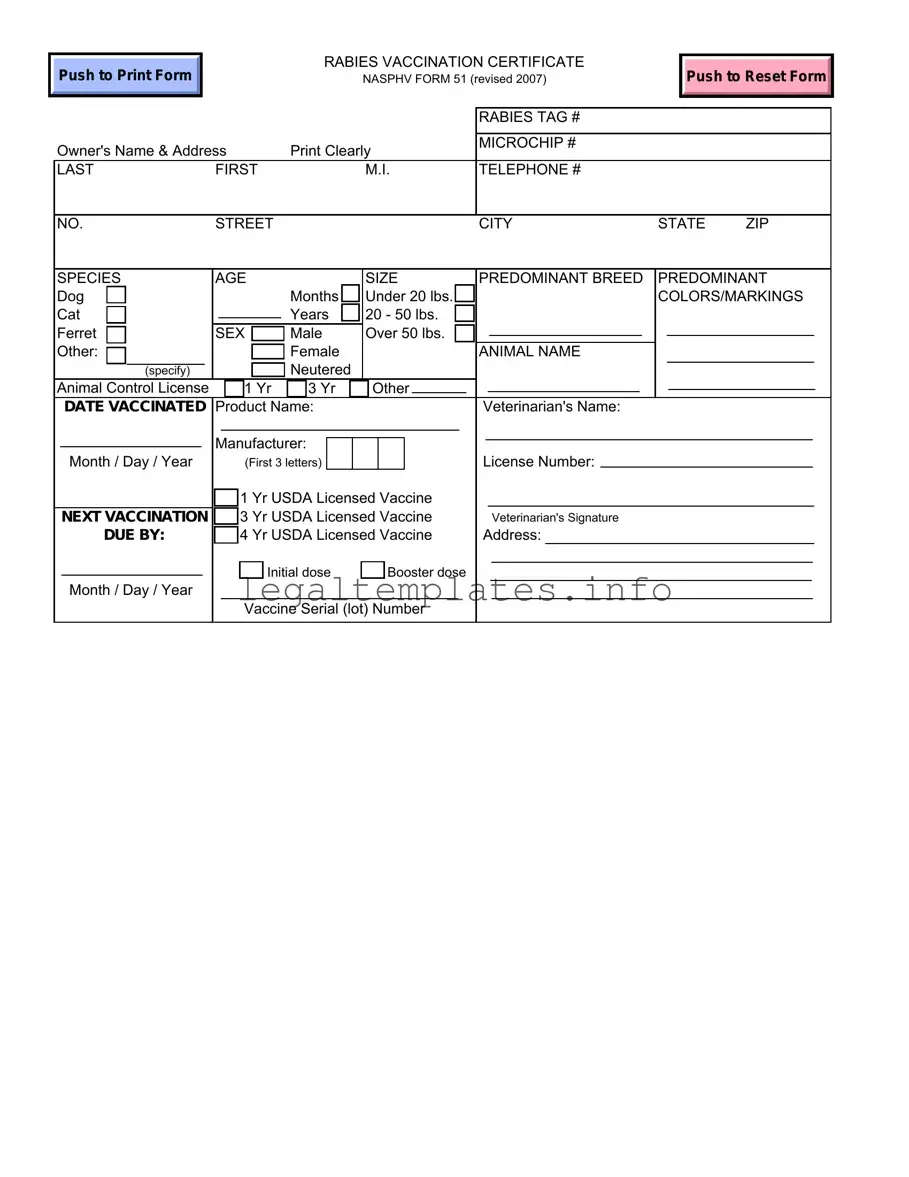The health certificate for pet travel closely resembles the Rabies Vaccination Certificate. Both documents are designed to ensure the safety and health compliance of animals during travel. The health certificate typically provides detailed medical information, including vaccinations beyond rabies, such as distemper, hepatitis, and parvovirus for dogs. While the Rabies Vaccination Certificate specifically focuses on rabies vaccination, both forms serve as official documentation that an animal is fit for travel and has received necessary medical care.
A Pet Passport is another document similar to the Rabies Vaccination Certificate but with a broader scope. The Pet Passport compiles a pet’s vaccination records, microchip number, and health assessments into one document for international travel. Like the Rabies Certificate, it's used to prove the animal’s health status and vaccination record. However, it encompasses more information, making it essential for crossing international borders, while the Rabies Certificate is generally limited to proving rabies vaccination status.
The Veterinary Health Certificate for domestic travel often parallels the Rabies Vaccination Certificate. It's a document declaring a pet's health status, required for interstate travel within many countries, including the U.S. The Rabies Vaccination Certificate is a critical part of this health certificate, verifying the animal's rabies vaccination. However, the broader Veterinary Health Certificate may include additional health information, such as freedom from parasites and other diseases.
Animal adoption forms often bear similarities to the Rabies Vaccination Certificate as well. These forms usually include information on the animal’s vaccination records, including rabies, to ensure they are healthy and safe to join a new home. While the Rabies Certificate focuses on rabies vaccination, adoption paperwork often encompasses a more comprehensive health overview, including the animal's medical history and current health status.
Animal license registration forms share similarities with the Rabies Vaccination Certificate. Many municipalities require proof of rabies vaccination, sometimes documented through a Rabies Vaccination Certificate, for the registration and licensing of pets. These forms also collect owner contact information, pet description, and sometimes microchip number, just as the Rabies Certificate does, but their primary purpose is for identification and legal compliance rather than purely health-related.
The Animal Passport for livestock and equine transport internationally somewhat mirrors the intent behind the Rabies Vaccination Certificate. This document focuses on the health and vaccination status of livestock and horses, ensuring they meet entry requirements of different countries. While concentrating on a different animal category, both documents serve the purpose of certifying health status for the safety of the animals and other species they may come in contact with.
Service and Emotional Support Animal documentation may also contain elements familiar to the Rabies Vaccination Certificate. These documents include details about the animal’s health and vaccination records to ensure they are safe to accompany their owners in various public settings. While these certifications emphasize the animal's role and training, they, too, recognize the importance of valid rabies vaccination for public health.
Quarantine release forms for animals entering countries with strict biosecurity laws share a common goal with the Rabies Vaccination Certificate. While focusing on a broader spectrum of diseases and conditions, these forms certify that an animal has met all health requirements of the importing country, including rabies vaccination. The main purpose of both documents is to prevent the spread of diseases.
Endangered species transport documents, necessary for the legal movement of protected animals across borders, also relate to the Rabies Vaccination Certificate by emphasizing the health and vaccination status of animals in transit. These documents focus on the protection of rare or endangered species by ensuring they are free from diseases that could threaten their populations, including rabies.
Finally, kennel club registration papers, while primarily focused on the pedigree and breed standards, often require proof of vaccinations, including rabies, similar to the Rabies Vaccination Certificate. This ensures that all registered animals maintain a standard of health and are protected against common diseases, safeguarding both the animals and their human companions.

